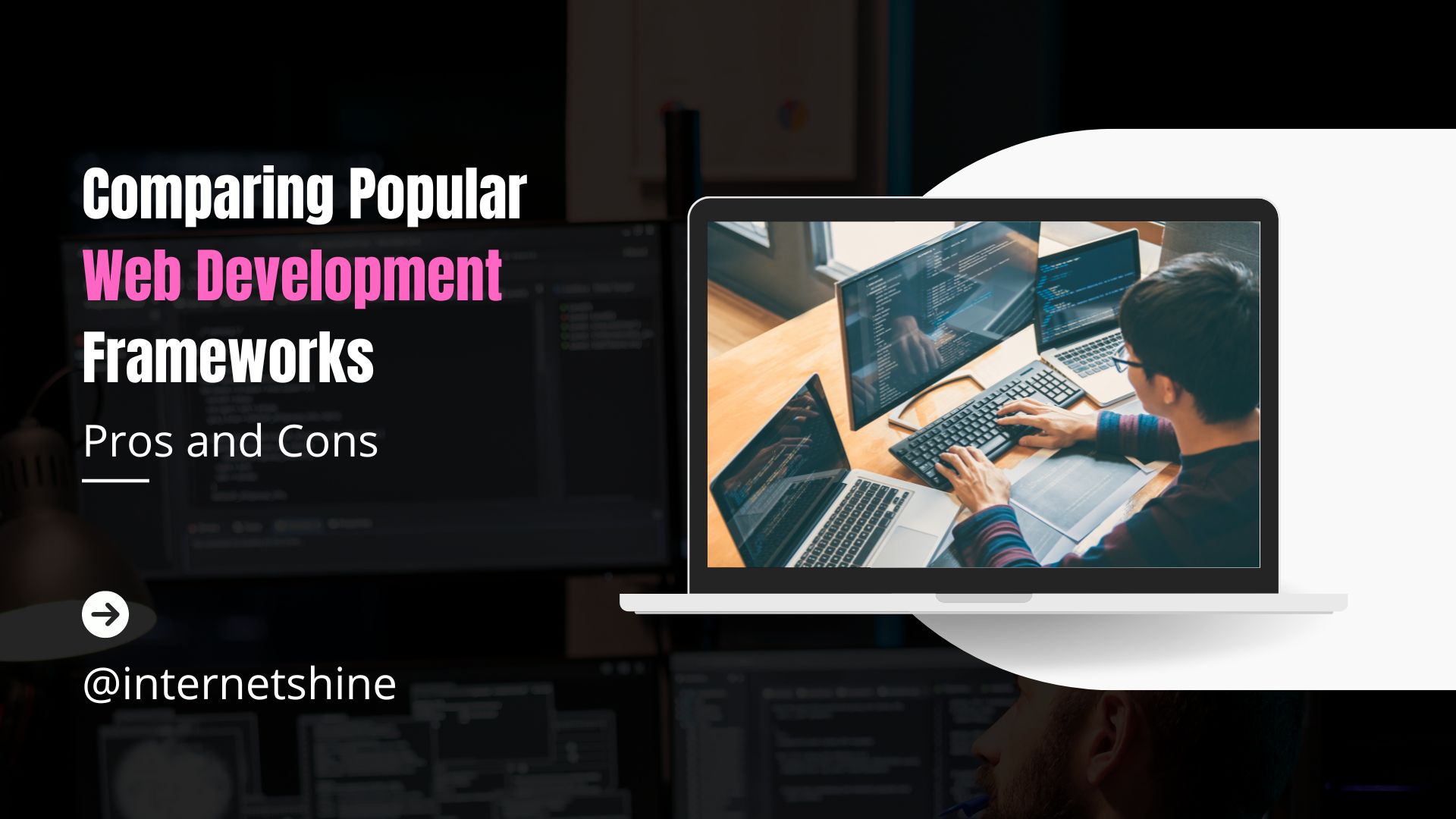Comparing Popular Web Development Frameworks: Pros and Cons
Web development frameworks are essential tools for developers, enabling the efficient creation of web applications by providing pre-written code and standardized practices. This blog compares several popular web development frameworks, outlining their pros and cons to help you choose the best one for your project.
Front-End Frameworks
1. Angular
Pros:
- Robust Toolset: Angular is maintained by Google and offers a comprehensive set of tools for building dynamic single-page applications (SPAs).
- Two-Way Data Binding: Changes in the user interface automatically update the data model and vice versa, simplifying the development process.
- Strong Community Support: A large community and extensive documentation make it easier for developers to find resources and support.
Cons:
- Steep Learning Curve: Beginners may find it challenging to grasp Angular’s concepts and architecture.
- Performance Issues: The framework’s heavy codebase can lead to performance bottlenecks in larger applications.
2. React
Pros:
- Virtual DOM: React’s virtual DOM allows for efficient updates by only re-rendering components that have changed, enhancing performance.
- Component-Based Architecture: This modular approach makes it easier to manage and reuse code.
- Large Ecosystem: A vast community and rich ecosystem of libraries and tools support development.
Cons:
- Integration Complexity: Integrating React with other libraries or frameworks can be challenging.
- Learning Curve: Requires a solid understanding of JavaScript and JSX, which may be difficult for newcomers.
3. Vue.js
Pros:
- Simplicity: Vue.js is known for its gentle learning curve and ease of integration into projects.
- Reactive Data Binding: It provides a straightforward way to manage data and UI components.
- Flexibility: Developers can structure their applications in various ways, allowing for customization.
Cons:
- Limited Resources: Compared to Angular and React, Vue.js has a smaller community and fewer resources available.
- Performance Concerns: While generally efficient, Vue.js may struggle with very large applications due to its reactivity system.
Back-End Frameworks
1. Django
Pros:
- Rapid Development: Django promotes quick development with its built-in features and “batteries-included” philosophy.
- Robust Security: It includes security features to protect against common vulnerabilities.
- Scalability: Well-suited for building large applications, especially those requiring complex data handling.
Cons:
- Monolithic Structure: Its monolithic nature can make it less flexible for smaller projects.
- Learning Curve: New developers may find Django’s conventions and structure challenging to learn.
2. Ruby on Rails
Pros:
- Convention Over Configuration: Rails simplifies the development process by providing sensible defaults, reducing the need for configuration.
- Active Record: This powerful ORM (Object-Relational Mapping) library allows for easy database interactions.
- Strong Community: A vibrant community contributes to a wealth of libraries and plugins.
Cons:
- Performance: Ruby on Rails can be slower compared to other frameworks, particularly for high-traffic applications.
- Complex Deployment: Deploying Rails applications can be complicated, especially on servers that don’t natively support Ruby.
3. Express.js
Pros:
- Minimalist Framework: Express.js is lightweight and unopinionated, allowing developers to build applications with flexibility.
- Middleware Support: It has a robust middleware system that simplifies request handling and response management.
- Integration with Node.js: Express.js seamlessly integrates with Node.js, making it suitable for building scalable network applications.
Cons:
- Lack of Structure: Its flexibility can lead to disorganized code if not managed properly.
- Limited Features: As a minimalist framework, it may require additional libraries for features that are built-in with other frameworks.
Conclusion
Choosing the right web development framework depends on your project’s specific needs, your team’s expertise, and the desired application architecture. Each framework has its strengths and weaknesses, making it crucial to evaluate them based on your goals. Angular and React are excellent for dynamic front-end applications, while Django and Ruby on Rails are robust choices for back-end development. By understanding the pros and cons of these frameworks, you can make an informed decision that best suits your development requirements.

